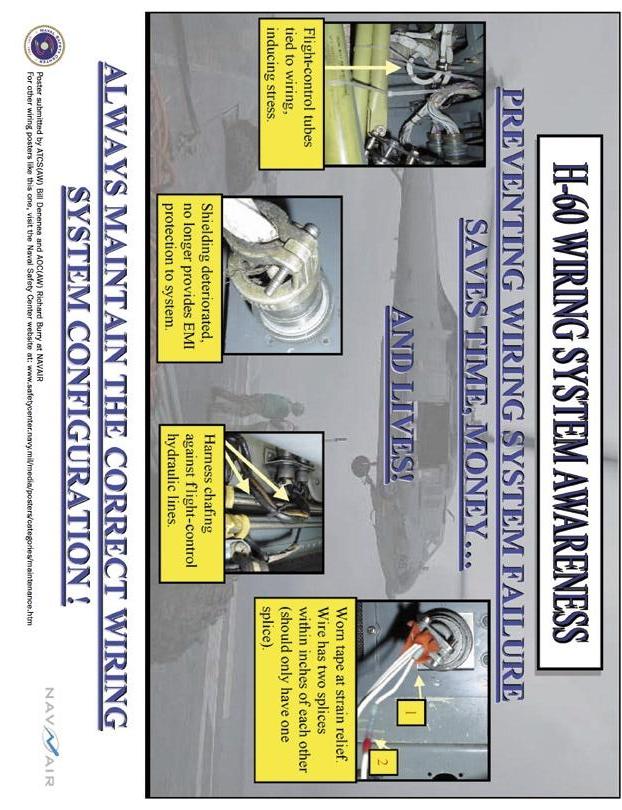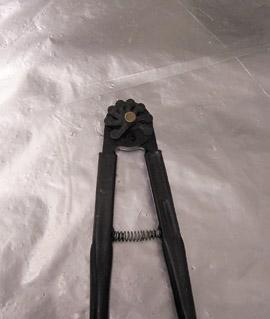
18 minute read
Crossfeed
Maintenance Officer
LCdr. Bert Ortiz bert.ortiz@navy.mil
Advertisement
Editorial Coordinator
AMC(AW) Paul Hofstad
Maintenance Management Inspection Paperwork Crucial to Safety
By AZCS(AW) Stephen Miller
Since being attached to the Naval Safety Center, I’ve done a number of safety surveys and have found a common trend across all aircraft platforms. The problem area concerns the logsand-records portion of NALCOMIS OMA not being up-to-date or correctly maintained—specifically, scheduled inspection reports.
All too often, I find critical errors while checking the NALCOMIS Scheduled Inspection Reports. They have erroneous “Next Due” inspection dates and times or other errors. These problems are easy to fix, but it does take a little attention to detail—something that appears to be missing.
When an aircraft is received, the logs-andrecords clerk must make sure that the special inspection base dates and times are checked. The problem appears to be that AZs (6030 MOS for Marine Corps) are taking the dates listed in NALBy AMC(AW) Paul Hofstad
During CY05, maintenance analysts assigned to the Naval Safety Center traveled to all corners of the globe, doing surveys and giving maintenance malpractice and khaki risk management presentations (MMPs and KRMs) to Sailors and Marines in the fleet. I asked my survey-team shipmates to send me things that “hurt their heads” during surveys in the past year. We did a total of 85 surveys and 167 MMPs, reaching 19,379 Sailors and Marines; 63 KRMs, paul.hofstad@navy.mil COMIS verbatim and not verifying the base dates and times for calendar and hourly inspections with the miscellaneous history section of the logbook.
I also have found many inspections missing re-base entries in the miscellaneous history section for inspections issued earlier than the three-day rule for calendar inspections and the 10-percent rule for hourly inspections.
Simply verifying data in NALCOMIS against logbook entries can eliminate the majority of these discrepancies. Not catching re-basing entries shows that maintenance control and the logs and records clerks lack attention to detail and pose a safety issue. Take action immediately upon accepting an aircraft, fix any errors, and keep these problems from spiraling out of control.
Senior Chief Miller is a maintenance analyst
2005: Crossfeed, The Year in Review
at the Naval Safety Center. giving vital statistics to our senior leadership; and publishing 20 Crossfeed articles in Mech, which distributed 69,485 copies to the fleet. On average, we spent 137 days on the road. Where is this information leading? Well, to the “top 10” discrepancies that we helped supervisors identify during the course of the year!
No. 1: Errors in logbooks, including aircraft, engine and AESRs. The discrepancies ranged from incorporation of technical directives to something as
simple as accuracy of dates within each logbook. It is imperative that the logbook tells an accurate story of our aircraft and components. To do this, “attention to detail” is the key to success. Our analysts know the logbooks inside and out and carry with them over 30 years of experience. They are meticulous when it comes to reviewing them.
No. 2: Dirty and FOD-filled toolboxes. Let’s face it; they get used extensively in the repair of aircraft. So put a person in charge of their cleanliness on a weekly basis and get our junior people into the habit of taking care of them. That approach will pay dividends in the long run.
No. 3: Improper storage of lithium batteries. It already has been proven that these batteries will explode. By simply storing these batteries by themselves in an approved storage locker away from other hazardous and combustible materials will alleviate the need to rush one of our shipmates to the emergency room.
No. 4: Our next discrepancy is near and dear to my heart. I wrote my first Crossfeed article on this very subject. It is conducting drills and quarterly training on emergency reclamation. Conducting ERT drills are as important as conducting flightdeck drills. If one of your airplanes gets soaked with AFFF, you quickly learn how important your ERT team is. Not holding drills only increases the reaction time it takes to get your aircraft back up.
No. 5: Failure to follow standard operating procedures (SOPs) governing the selection, care, issue and use of respirators. SOPs set the groundwork for a command to both monitor and manage respirator use. SOPs are required and should be posted in the immediate area where maintainers work. More times than not, they are found in the program manager’s binder. This is OK if you don’t mind folks rummaging through your binder on a day-to-day basis. It is much easier to post them near the location where paints are mixed (for example, a bulkhead or bench). Outside the paint booth is another good place. People need to see the SOP continually so that respirator use, cleanliness, and storage become second nature.
No. 6: Respirator cartridges aren’t changed regularly. Some instructions state to change the cartridge if a person senses “break through” of a component, meaning when a chemical is smelled or tasted through a respirator. We recommend cartridges be changed every eight hours. Some commands will change them out at the end of the shift. That is fine, too. The key is to change them and to have the manager or coordinator spot-check to ensure compliance.
No. 7: Improper inspection, cleanliness and storage of respirators. This problem area is related to No. 5 and No. 6. A command can have a good SOP and cartridge swap-out schedule, but improperly stored, inspected, or cleaned respirators defeat the benefits of the other items.
No. 8: Improper identification of multi-piece tools. Without getting into great detail, we see improper identification on combination squares and rivet cutters. Countless times we have looked at the combination square and asked an airframer where the scribe is that goes with the set? Typically, the answer is, “I didn’t know that a scribe was supposed to be there.” Read the Mech article, “I Didn’t Know That,” which identifies the problem with multi-piece tools in the fleet. The bottom line is that six pieces exist, vice the two that normally are accounted for on inventory sheets. With a rivet cutter, squadrons often will identify it as a onepiece tool, when, in fact, it has eight leaves, a bolt, a nut, and the piece itself—nine pieces to account for.
No. 9: Lack of neutralizing agents for an electrolyte spill. Commands are required to have six ounces of sodium bicarbonate dissolved in one gallon of water for lead-acid spills, or one quart of distilled white vinegar distilled in one gallon of water for nickel-cadmium spills. These neutralizing agents are priceless should electrolyte spill on someone.
No 10: Work centers do not have industrial hygiene (IH) surveys available. Organizational squadrons are required to have IH surveys completed every two years. AIMDS/MALS are required to have IH surveys done annually. These surveys are useless unless the folks actually doing the work know about the contents of the survey. Unfortunately, this information usually is kept in the safety petty officer’s filing cabinet, rather than handed out to work centers. This survey is an important document, and everyone in the work center should read and understand its contents. It gives the shop and its workers a written record of hearing and respirator requirements in the work area, to name a few. Work centers don’t need the entire survey, only the portions that relate to their shop and the parts their personnel should review.
That’s the top-10 list of discrepancies, but I have an honorable mention that comes from Senior Chief Phil LeCroy. It’s an old favorite and
continues to be a nagging problem: the improper storage and recordkeeping for tie-down chains. They are required to be stored in homogenous lots, as per CNAFINST 4790.2 series. That statement means TD-1A and TD-1B chains cannot be stored together. They also must be stored in lots of 10, and the records (/51 cards) should reflect preservation and de-preservation, 30-day inspections, and must give accurate information about what chains actually are stored.
We had 154 Class C mishaps during CY2005 that cost the Navy and Marine Corps $9.5 million. By ADC(AW) Gary Eldridge
During countless surveys around the world, I have found individual material readiness list (IMRL) inventory and accountability to be a challenge for commands. I have noticed an abundance of excess IMRL gear piled into conex boxes or tossed into a cage in a corner of the hangar bay. That’s not how to handle, control or store the gear.
IMRL is a consolidated list of specified items and quantities of support equipment (SE) that a particular aircraft maintenance activity requires to do its assigned mission.
COMNAVAIRSYSCOM builds the IMRL for all Navy and Marine Corps aviation activities by extracting SE items from the support equipment resources management information system (SERMIS) database. IMRLs identify material requirements and provide a basis for SE procurement. This information also aids decisions on readiness, budget forecasts, procurement requirements, and redistribution of excess assets.
An important priority for an IMRL manager who has just taken over the position is the need to do a complete wall-to-wall inventory. That person must make sure that all assets are inventoried, the status of all assets is determined (A1, A2, F1, etc.), and all “found” items are “gained” into LAMS. Use an The common theme in these mishaps was lack of attention to detail. We certainly can do better and need to use operational risk management (ORM) in every task, even the most trivial ones. Overconfidence in doing a mundane, repetitive job often leads to mishaps. Pay attention to the surroundings and understand that maintainers work in an environment full of risks…no matter how small. How we identify and manage those risks is the key to completing our mission and doing it safely.
Chief Hofstad is a maintenance analyst at the Naval Safety Center and the coordinator of the
Support Equipment
Where Did All That Stuff Come From?
Crossfeed section of Mech. active transaction report (TR) to make sure that proper transaction codes are used for items gained or transferred. The manager also must make sure an SE acceptance/transfer inspection checklist is filled out and routed with each piece of gear identified as a “gained” asset. This form is used for transfers, too, and it ensures the proper acceptance and transfer inspections are done, the asset is gained (or removed) from either NALCOMIS for SE PMS tracking or into the Navy Metrology and Calibration Program (METCAL) for calibration.
If no PMS or calibration is needed, then the form is held in suspense to show an acceptance inspection was completed. The form also shows that all TDs, IRACs and changes have been incorporated on the asset. Without this tracking sheet, the asset could become lost in the system and not have any PMS, calibration or upgrades made to it, making it a hazard to aircraft, components and/or personnel.
With more than 37,000 assets in the system, no one can allow the management of these items to slide for a couple weeks. Someone must stay on top of the program.
Chief Eldridge is a maintenance analyst at the Naval Safety Center.
Tool Control
One Piece, Two Pieces, Three Pieces, Four…
By AMC(AW) Michael Malley
Sounds a bit like a children’s book, doesn’t it? But multiple-piece tools continue to be an issue in the airframes structural-repair toolbox. During a recent survey, 12 missing pieces were found on three different tools, and all were in one box.
Each box usually contains a 16-inch rivet cutter, combination square, and a multi-angle adaptor for the combination-square scale. During safety surveys, numerous issues with these three tools can cause an airframes supervisor unending headaches. We have found the missing leaves from the rivet cutter, springs, knurled knobs (replaced with a screw), and handles reversed. The combination square typically is found with a missing
scribe, knurled-knob spring, and retaining cap for the level. The multi-angle adaptor often is missing retaining studs, springs and washers.
During tool inventories around the fleet, these multi-piece tools commonly are overlooked. These tools often are used only in the work center, yet the technicians fail to properly account for all the pieces.
The rivet cutter has the following count: two handles secured with a locknut (count as one), a spring, retaining stud and eight leaves (see photos No. 1 and No. 2) for 11 pieces. But a review of inventory sheets will list this as one piece. In one command, our team found three leaves missing.
Photo 1: Rivet cutter
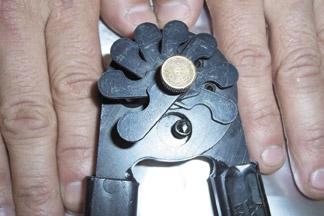
Photo 2: Closeup of the parts in a rivet cutter
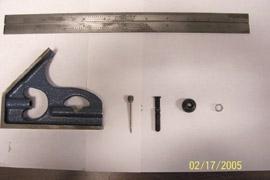
Photo 3: Combination square parts Photo 4: Parts in multi-angle adaptor
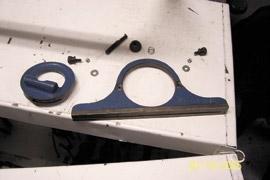
No one had used this tool in a long time, but, each morning and evening, all tools were signed off as accounted for. When did these leaves go missing? Why didn’t anyone notice? Why aren’t maintenance technicians familiar with the design of these tools? All these questions must be answered.
The combination square and multi-angle adaptor is another tool that technicians take for granted. The piece most often found missing is the scribe, which is located on the back of the combinationsquare frame. That item is 1.5 inches long and is secured with a roll pin on the back of the frame. This piece sometimes is removed before issue, but the tool-room supervisor frequently does not document that fact on master inventories. Another overlooked piece from the combination square is the tiny spring on the retaining stud. Container inventory sheets usually list this tool as two pieces and the adaptor as part of the item number. A few minutes and the stroke of a pen is all it takes to fix this problem.
When the combination square comes from the manufacturer, it has about seven pieces (see photo No. 3). Simply remove the spring, cap and scribe and this tool can be maintained in the toolbox as only four pieces (scale, frame, retaining stud, and knurled nut). Removing the other pieces doesn’t By ATCS(AW/SW) Denis Komornik
I’m sure everyone has said or heard those words, either out loud or muttered under a person’s breath. It might have happened while driving around town and looking for a school, mall, car dealership or myriad other sites. Face it; we’ve all gotten lost before, and it’s no big deal. Simply pull over and ask for directions. But what happens when it’s an aircraft that’s lost, and the pilot can’t ask for help?
Take this scenario: A pilot is flying with a dualembedded inertial-navigation system (INS) when, suddenly, all electrical power is lost, the aircraft is running low on fuel, and the standby compass isn’t calibrated correctly. It’s too late to pull over in the affect the operation of the combination square, but it does remove a potential FOD source. Ensure that QA and the tool room are part of this process and the removed pieces are annotated as “removed due to potential FOD hazards.” This step simplifies the inventory process and eliminates the worry about small, easily lost parts. I also recommend leaving the level in place and filling the holes with sealant to keep someone from questioning an empty hole. An inspector should come to the conclusion that an item was removed because of a potential FOD hazard and can follow the removal documentation.
The same process can be used for the multiangle adaptor (see photo No. 4). Remove the small springs, keep the washers and retaining studs, and count these pieces and mark the inventory sheet appropriately. Always ensure that the work center tool-container inventory matches the tool room’s master inventory.
The key to multiple-piece tools is instant inventory. Don’t make it harder than it needs to be. Here’s a good rule of thumb: If a piece can be removed by hand, then count it. Don’t take for granted that your technicians know how to use the tools in the boxes because they probably don’t.
Chief Malley was a maintenance analyst at the
Avionics
What Do You Mean We’re Lost?
Naval Safety Center. He has transferred to VFA-103. clouds, so what happens next?
The odds of this scenario happening is extremely low, but, if maintenance continues the way I’ve seen on my last few safety surveys, it could be more likely.
The disturbing trend I’ve seen involves commands that fly aircraft with dual INS systems. Some don’t realize they still must do an in-flight verification (IFV) of the standby compass every 365 days, and, even when it’s done, people often make mistakes calculating and recording the results. For example, during preflight briefs for the IFV, some squadron compass calibration program managers have told pilots, “If the standby compass is
within +/- 5 degrees of the heading (i.e., 000), it’s good to go. Write it down, and move on to the next heading.”
The problem is what gets recorded: The heading of the INS (000) or the actual heading on the standby compass (say 003) or corrective heading. What needs to be briefed to pilots is for them to “write down the corrective heading the standby compass reads for all heading points listed on the calibration card.”
I have seen too many cards that have perfect standby compass readings (000, 015, 030, 045, etc). The probability of those perfect readings By AEC(AW/SW) Matthew Cooper
Traveling around the world to do surveys, we have discovered a training deficiency in the battery-safety program. Specifically, the fleet lacks knowledge about the NAVSEA S9310-AQSAF-010—the lithium-battery publication.
These batteries can be dangerous and require specific handling and disposal, yet it seems the fleet does not use this publication at all. This manual is the most important link in the safe handling, storage and disposal of lithium batteries.
When we ask a program manager who in the command has lithium batteries, we usually get a “deer in the headlight” look. The reason is simple: No one is aware that lithium batteries are their responsibility. Managers often are unaware that the overall program even includes this type of battery. being “balls on” is less than the chance of winning the lottery.
The corrective-heading readings on the standby compass card is vital and will let the pilot know which direction to navigate should both embedded INS systems be lost. Should an emergency arise, the standby compass would be the only resource left to get the aircraft and crew home safely. Do your job, brief the right procedure, and give your crew a fighting chance to bring an aircraft back safely.
Senior Chief Komornik is a maintenance ana
Battery Safety Where Are Your Lithiums?
lyst at the Naval Safety Center.
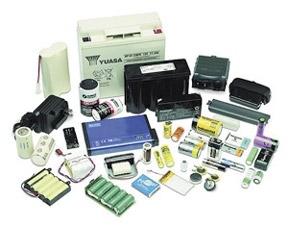
This fact often leads us to an Easter egg hunt through the command to find all the places where these batteries are used. The flight-equipment shop has their share of them for PRC-149 radios and night-vision goggles. Some new avionics systems have several different backup batteries that are lithium.
Most of the time, we believe this problem simply is a lack of training, not a lack of desire. The lithium-battery publication gives specific guidance on the safe storage, handling and disposal of these types of batteries. People must get past the old habit of throwing these batteries in the trash. These batteries can be dangerous and shouldn’t be mishandled. They can explode should people fail to follow procedures.
Lithium batteries must be stored in a separate area outside of a manned space or work center, and they cannot be stored with other types of batteries.
When expended, lithium batteries must be treated as hazmat and must be bagged individually because, when stored loosely in a container, they can short and overheat, causing an explosion.
For these reasons, it is critical that the command’s battery-safety representative be familiar with and use the NAVSEA S9310-AQ-DSAF-010 publication when dealing with lithium batteries.
Chief Cooper is a maintenance analyst at the Naval Safety Center.
H otel Sierra Helping Sailors and Marines Help Themselves Sierra H otel Commander, Naval Safety Center would like to thank the following aviation commands for their recent participation in safety surveys, culture workshops, and maintenance malpractice (MMP)/khaki risk management (KRM) presentations.

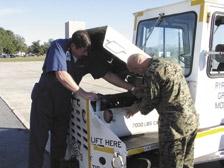


S afety S urveys HMM-264 VMFA-115 VFA-143 HMLA-269 VMMT-204 VR-55 VFA-11 VP-9 VPU-2 HMM-162 VFA-34 VAW-120 MALS-31 VP-4 HSC-2 VAW-113 VX-30 MALS-31
MMPs/KRMs VP-10 VR-53 MAG-29 AIMD Pt Mugu VP-4 VR-55 MAG-31 VAW-120 VP-9 VX-30 HCS-28 AIMD Brunswick VR-62 VPU-2 VFA-83 NAVAIR VP-8 VPU-I VFA-11 CPRW-10 VP-92 VX-1 VFA-86 AIMD PAX River VX-20 VAW-121 VAQ-138 AIMD Norfolk HC-2 VAW-126 CPRW-2 AIMD Whidbey Island VC-6 VFA-131 CPW-5 CNATTTU C ulture W orkshops HS-75 VPU-1 HMM-161 VAW-125 VP-26 HS-15 VMFA-332 VAQ-129 VR-61 HMLA-369 HMM-764 VS-31 HSL-46 NADEP NI HS-11 HSL-48 AIMD North Island VR-59 HMM-261 USS Ronald Reagan



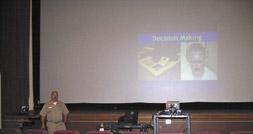
For more information or to get on the schedule, please contact: Safety Surveys: Lt. Angela Domingos at 757-444-3520 Ext. 7274 MMP/KRM: ADC Gary Eldridge at 757-444-3520 Ext. 7218 Culture Workshop: Cdr. John Morrison at 757-444-3520 Ext. 7213
